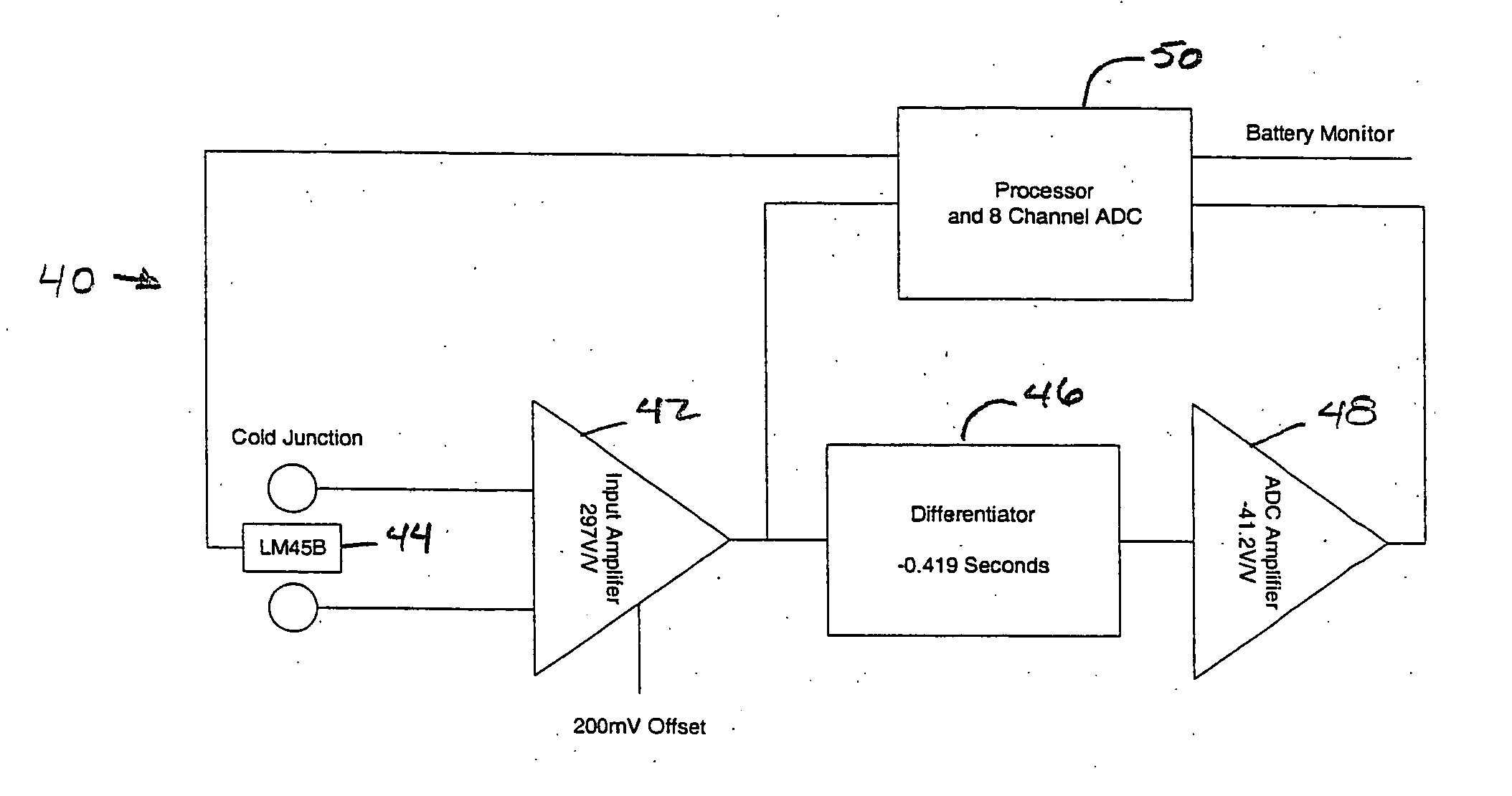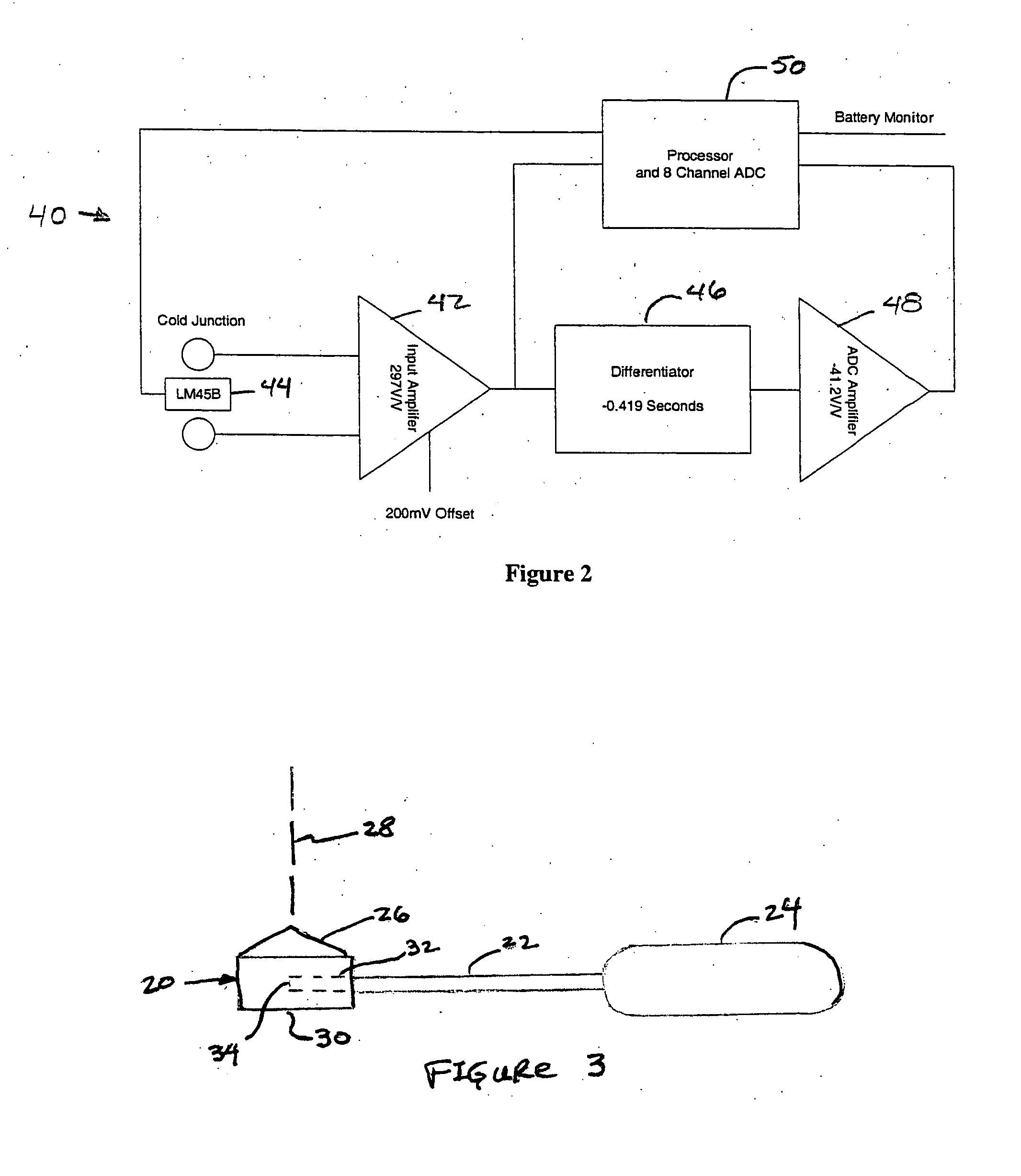Laser power meter
a laser power meter and laser power technology, applied in the direction of heat measurement, optical radiation measurement, instruments, etc., can solve problems such as source or error, and achieve the effects of accurate laser power measurement, increased accuracy of power meter, and low cos
- Summary
- Abstract
- Description
- Claims
- Application Information
AI Technical Summary
Benefits of technology
Problems solved by technology
Method used
Image
Examples
Embodiment Construction
The drawings depict various preferred embodiments of the present invention for purposes of illustration only. One skilled in the art will readily recognize from the following discussion that alternative embodiments of the structures and methods illustrated herein may be employed without departing from the principles of the invention described herein.
Shown in FIG. 1, the laser power meter 10 of the present invention has three main parts; an absorber 20, a stainless steel stem 22, and a computation and readout unit 24.
The absorber 20 is a mass of a thermally-conductive material, such as copper or aluminum, that is coated with a material that is resistant to laser damage. As best shown in FIG. 3, the absorber shape is preferably a cone with a rounded apex joined to a short cylinder. The absorber 20 has a conical portion 26 that is oriented toward the laser beam 28, plus a cylindrical portion 30 opposite the laser beam. The laser beam impinges on the rounded apex of the cone. The t...
PUM
| Property | Measurement | Unit |
|---|---|---|
| power | aaaaa | aaaaa |
| temperature | aaaaa | aaaaa |
| temperature | aaaaa | aaaaa |
Abstract
Description
Claims
Application Information
 Login to View More
Login to View More - R&D
- Intellectual Property
- Life Sciences
- Materials
- Tech Scout
- Unparalleled Data Quality
- Higher Quality Content
- 60% Fewer Hallucinations
Browse by: Latest US Patents, China's latest patents, Technical Efficacy Thesaurus, Application Domain, Technology Topic, Popular Technical Reports.
© 2025 PatSnap. All rights reserved.Legal|Privacy policy|Modern Slavery Act Transparency Statement|Sitemap|About US| Contact US: help@patsnap.com



